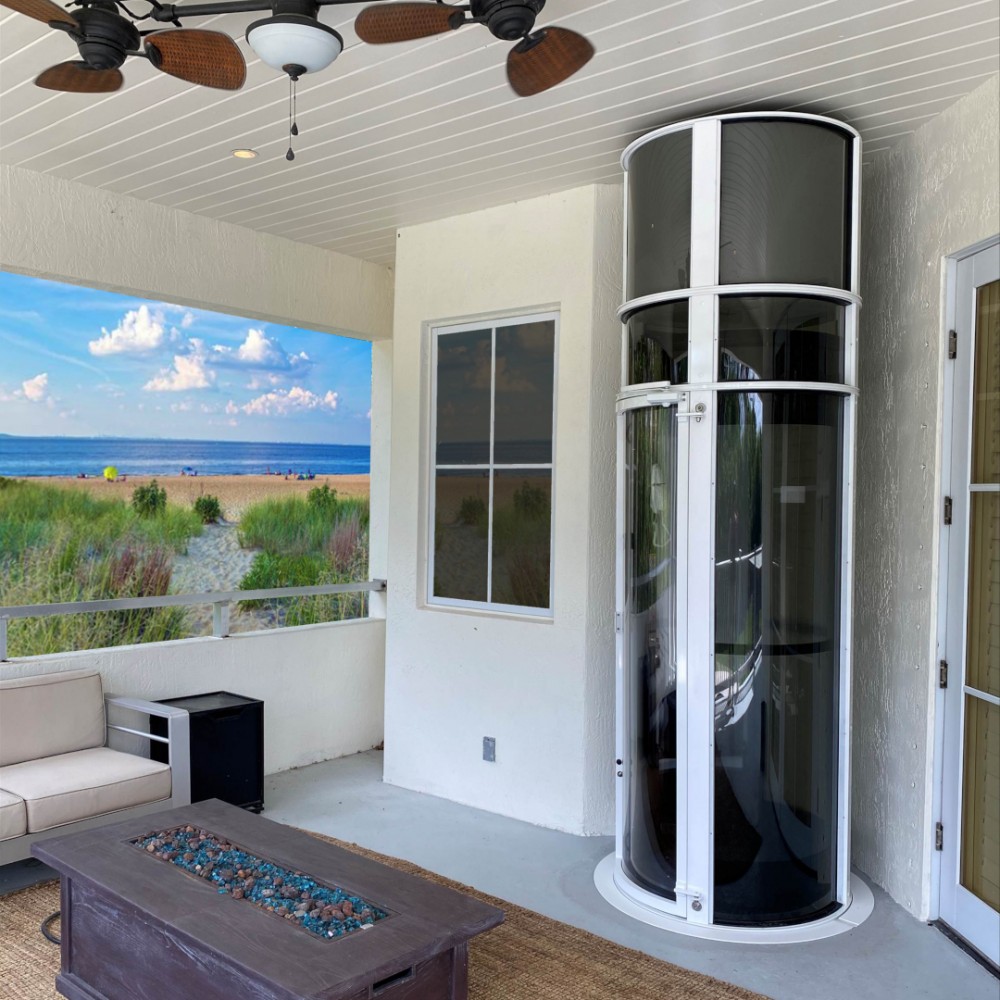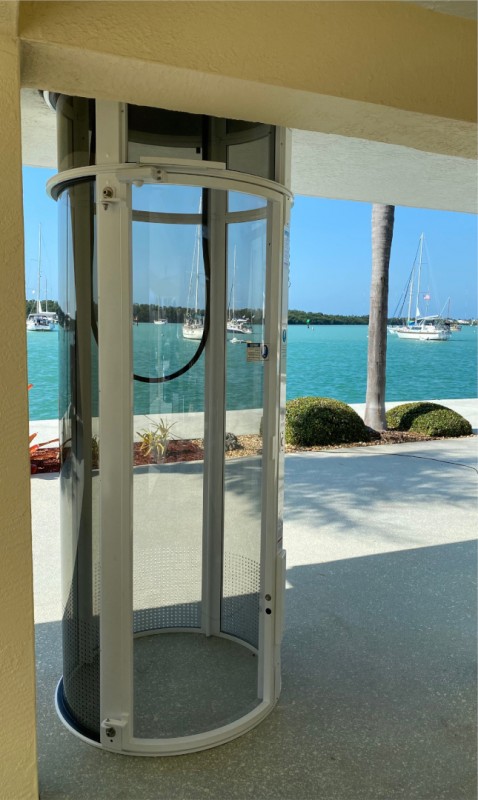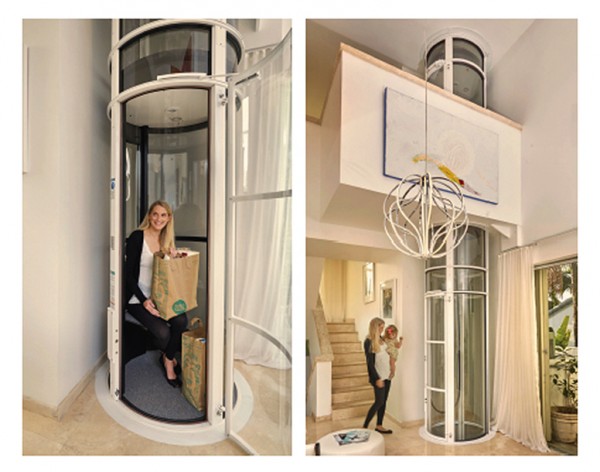Moving on Up

We take for granted the fact that many appliances around the home were not always standard. Automatic washers and dryers were considered a luxury in the 1930s and microwaves didn't even become mainstream until the late '60s—yet we can't imagine life without them. And if you ask Curt Lampe, co-owner of Total Access Elevators & Lifts, residential elevators are poised to become the next must-have appliance in the home.
 Lampe incorporated the company in 1991 with his partner Ted O'Neill. The market for residential elevators was still new, but over the past 30 years, Lampe says the demand has grown tremendously.
Lampe incorporated the company in 1991 with his partner Ted O'Neill. The market for residential elevators was still new, but over the past 30 years, Lampe says the demand has grown tremendously.
"In a lot of new construction, especially at the Shore for the multi-level properties, elevators are being put in automatically," he says. "We're also seeing people who want to age in place investing in an elevator instead of moving out of the home where they raised a family. They can install an elevator without the hassles of selling, packing and moving, and they can stay in their home comfortably."
Elevators appeal to people for a wide range of reasons, whether they want added luxury to their property or have mobility challenges. They can also be used to transport groceries, laundry and other bulky items as well, taking the physical burden off of people and encouraging more independent living.
There is a product to fit any lifestyle and budget, says Lampe. One of the most popular styles right now is the pneumatic vacuum elevator (PVE). Using only air, PVEs require less space and less energy than the traditional in-home elevator with a shaft.
"The PVE uses the same technology as when you go to the bank and send your money through the cylinder. One of the best features of this product is that construction is minimal. It doesn't need to be in a shaft, and we don't need to dig a pit in the basement," Lampe says. "Technology has come a long way."
These units are also eco-friendly, only using power when going up. Coming down is all gravity. Lampe says some models can connect to your smart home setup as well.
In areas where water might be a concern, the elevators have float switches and homing devices included. "If the unit comes down and hits water, it automatically shuts off. Also, after you take the unit down to the lower level, a homing device brings the unit back up to the highest level after five minutes in the event water could become an issue. It's safest up at the top," Lampe says.
Additional safety measures include light curtains, which can sense if something is operating incorrectly and stop the unit automatically. Doors must also be fully shut for it to run, and if a unit loses power, it can still lower itself to the lowest level so a passenger could exit.
If the design of a home does not allow for a clear passage for the elevator on the interior, an exterior installation will soon be available, says Lampe. Currently, the company has its first beta test exterior elevator attached to the side of its building, and it's expected to be available for residential installs by October.
Lampe says the time from when the product is ordered until installation is approximately two months, and if it's new construction, the elevator is one of the last things installed.
 Throughout the process, homeowners can expect to have any question answered by a knowledgeable team of professionals. "We pride ourselves on the longevity of our employees and sales consultants. Most have at least 14 years' experience each, and both myself and Ted are actively involved in the business every day," Lampe says.
Throughout the process, homeowners can expect to have any question answered by a knowledgeable team of professionals. "We pride ourselves on the longevity of our employees and sales consultants. Most have at least 14 years' experience each, and both myself and Ted are actively involved in the business every day," Lampe says.
Total Access services all of New Jersey and Delaware; Eastern Pennsylvania (out to State College) and Maryland (down to Baltimore).
Total Access Elevators & Lifts
(877) 333-LIFT
TotalAccessCo.com
Published (and copyrighted) in House & Home, Volume 22, Issue 5 (March 2022).
For more info on House & Home magazine, click here.
To subscribe to House & Home magazine, click here.
To advertise in House & Home magazine, call 610-272-3120.

